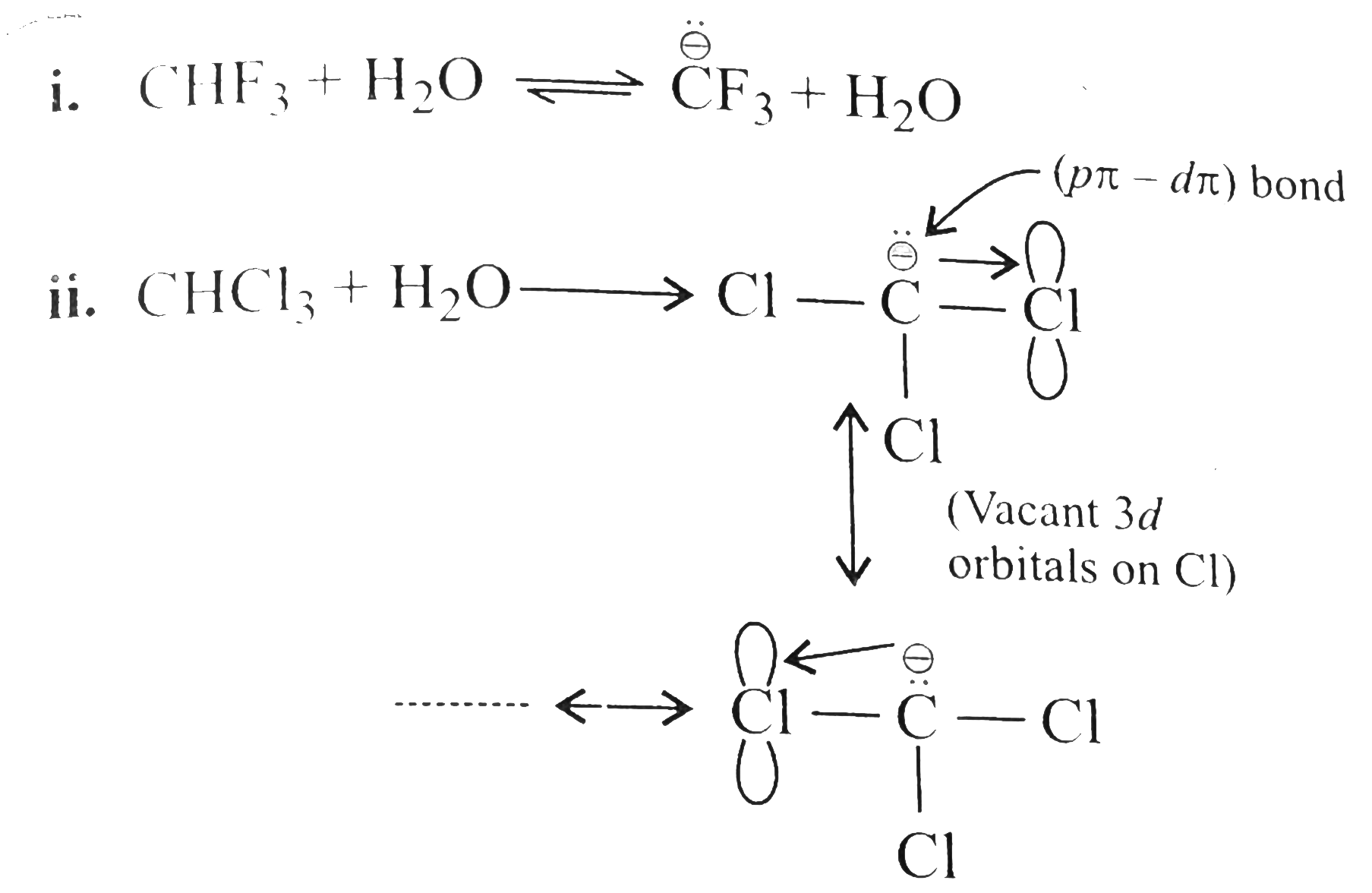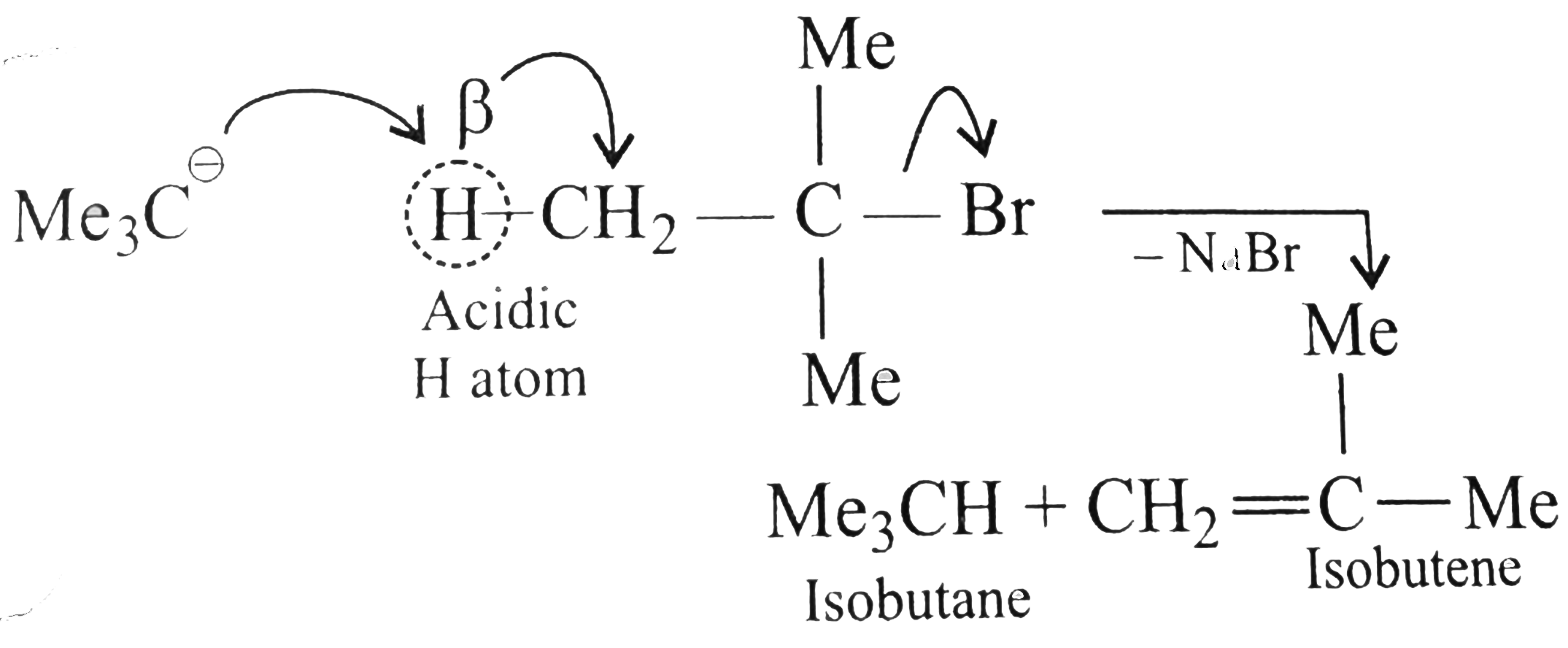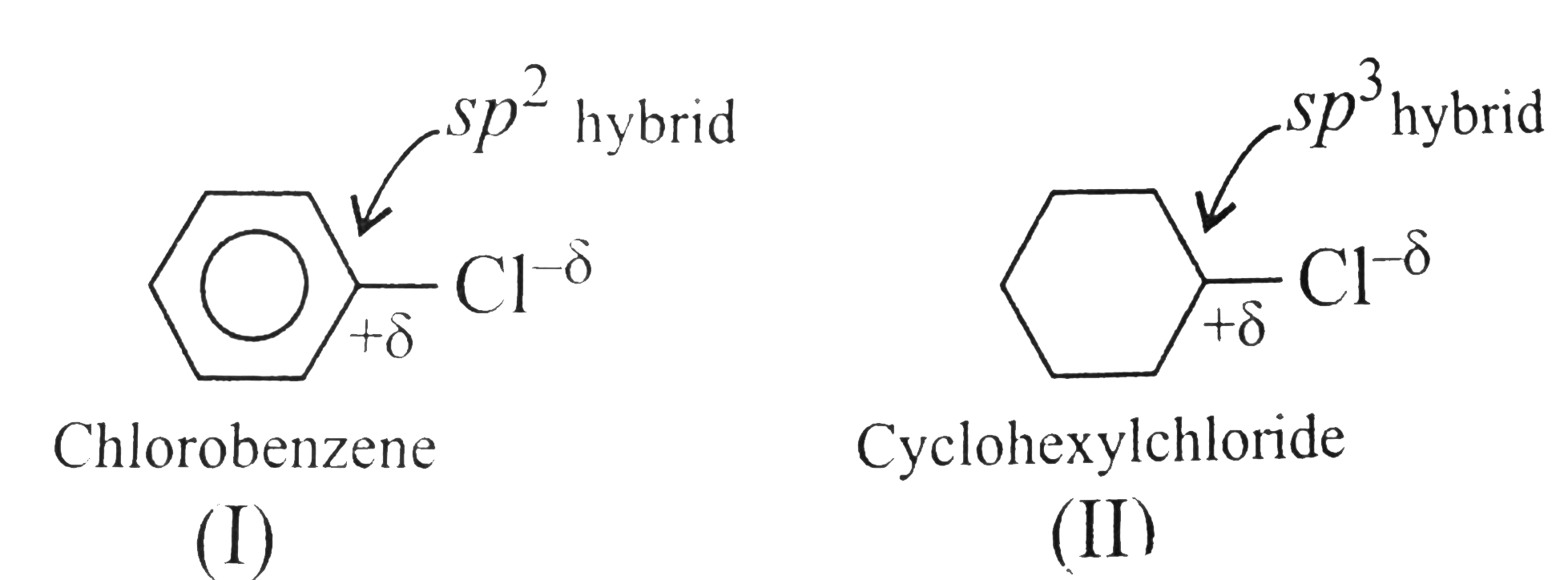a. The treatment of RX with aqueous KOH leads to the information of alcohols but in the presence of alcholic KOH or NaOH, alkenes are the major products. Expalin why.
b. CHF3 is less acidic than CHCl3. Explain.
c. Wurtz reaction in case of tert-alkyl halide fails. Explain.
d. Dipole moment of C6H5Cl is lower than that of C6H11Cl (cuclohexul choride). Expalin why.
e. Why should Grignard reagent be prepared under anthydrous conditions?
f. Why does p− dichlorobenzene have higher melting point and lower solubility than o− and m− isomers ?
a. NaOH or KOH is completely ionised in aquioes solution to give Oh ions, which acts as a strong nuclophile, so SN reaction takes place with RX to give alcholos. Moreover, OH ions are hydrarded or solvated in aquires soltion which reduces the basic character of overset(ᶱ)(O)H that cannot abstact acidic β−H atom of EX to from alkene.
In case of alcholic solution of NaOH or KOH,ᶱOH reacts with ROH to from RO(alk⊗ion)whichisastron≥rbasethanoverset((-))(O)H,andRO^((-))can|t|ractaccbeta-Ha→mofRXeasily→formalkense.<br>d-IeffectofFgtCl.Aord∈g→-Ieffect,CHF_(3)~ should be more acidic than CHCl23. but this is not observed. the conjugate base ..(−)CCl3 is resonance stabilised due to the presence of d-orbital in Cl[2p(C)−3d(Cl)] overlap. But conjugate base ..(−)CF3 is not resonance stabilised due to the absence of d-orbital in F.

(c) Me3C−X+2Na→Mt-Butylsodiume3(−)C−⊕Na+NaX
t-Alkyl halides undergo dehydrohalogenation in the presence of storng base such as Na metal rather than Wurtz reaction.

Therefore, 1∘ and 2∘RX undergo Wurtz reaction, while 3∘RX undergo dehydroghalogenation to give alkenes.

(i) sp2 -Hybrid C atom is more EN than sp3 -hybrid C atom .
(ii) Therefore sp2 -hybrid C atom of (C−Cl) bond in (i) has less tendency to release electrons to Cl than ans sp3 -hybrid C of (II).
(iii) Therefore,(C−Cl) bond in (I) less polar than in (II), i.e., magnitude opf δ(−) charge is less on Cl atom of (I) than that of (II)
(iv) Due top resonance in (I), the (C−Cl) bond in (I) acquire some double bond character and is shorter than that in (II).
(v). Since μ=q×d (charge ×distance), therefore, (I) has lower μ than (II).
(e) Grignard reagents are very reactive and they react with moisture present int the reaction mixture, therefore they must be prepared under anhydrous conditions.

(f) Due to symmetrical packing in its crystal lattice of p-isomer, they have stronger intermolecular force of attraction than o− and m− isomers. Therefore, large amount of energy is required for its melting than for the o− and m−isomers.
The enthalpy of intermolecular force of attraction in p-isomer is greater than the enthalpy of dissolution. hence p−isomer has lower solubility than its isomers.
Topper's Solved these Questions
- AROMATIC COMPOUNDS AND ALKYL AND ARYL HALIDES BOOK - CENGAGE CHEMISTRY ENGLISHCHAPTER - AROMATIC COMPOUNDS AND ALKYL AND ARYL HALIDES EXERCISE - Solved Problems
37 Videos
- AROMATIC COMPOUNDS AND ALKYL AND ARYL HALIDES BOOK - CENGAGE CHEMISTRY ENGLISHCHAPTER - AROMATIC COMPOUNDS AND ALKYL AND ARYL HALIDES EXERCISE - Exercises Subjective Type
5 Videos
- AROMATIC COMPOUNDS AND ALKYL AND ARYL HALIDES BOOK - CENGAGE CHEMISTRY ENGLISHCHAPTER - AROMATIC COMPOUNDS AND ALKYL AND ARYL HALIDES EXERCISE - Archives Subjective Type
4 Videos
- APPENDIX INORGANIC VOLUME 2BOOK - CENGAGE CHEMISTRY ENGLISHCHAPTER - APPENDIX INORGANIC VOLUME 2EXERCISE - Short Answer Type
179 Videos
- BIOMOLECULESBOOK - CENGAGE CHEMISTRY ENGLISHCHAPTER - BIOMOLECULESEXERCISE - Exercises Archives (Analytical And Descriptive)
8 Videos
Similar Questions
Wurtz reaction fails in case of tert-alkyl halides. Explain.
View SolutionThe treatment of alkyl chlorides with aqueous KOH leads to the formation of alcohols but in the presence of alcoholic KOH, alkenes are major products. Explain.
View SolutionThe treatment of alkyl chlorides with aqueous KOH leads to the formation of alcohols but in the presence of alcoholic KOH, alkenes are major products. Explain.
View SolutionThe treatment of alkyl chlorides with aqueous KOH leads to the formation of alcohols but in the presence of alcoholic KOH, alkenes are major products. Explain.
View SolutionThe treatment of alkyl chlorides with aqueous KOH leads to the formation of alcohols but in the presence of alcoholic KOH, alkenes are major products. Explain.
View SolutionThe treatment of alkyl chloride with aqueous KOH leads to formation of alcohols but in the presence of alcoholic KOH, alkenes are major products. Explain.
View SolutionThe treatment of alkyl chlorides with aqueous KOH leads to the formation of alcohols but in the presence of alcoholic KOH, alkenes are major products. Explain.
View SolutionC6H5Cl is less/more reactive than C6H11Cl.
View SolutionC6H5Cl is less/more reactive than C6H11Cl.
View SolutionProve that dipole moment of
C6H5Cl and m−C6H4Cl2 are same
View Solution
